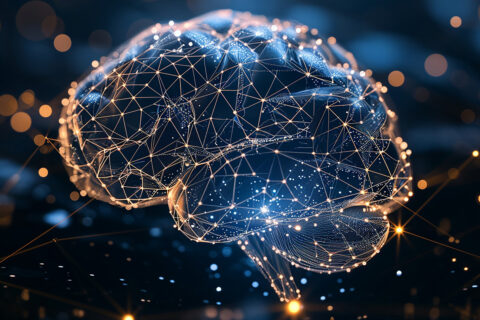DFG funding: AI reliably detects nerve cells
Computer scientists at FAU provide support for neuroscience: 320,000 euros for new project
Neurons in the hippocampus control our spatial learning, however, they are very unstable. Researchers at Friedrich-Alexander-Universität Erlangen-Nürnberg (FAU) and the Leibniz Institute for Neurobiology (LIN) in Magdeburg are trying to decipher these dynamics in a joint project. The LIN will provide time lapse images from the brains of mice and FAU is going to develop an AI-supported tool for analyzing the images. The project is being funded by the German Research Foundation (DFG), with FAU receiving 320,000 euros.
The hippocampus is part of the limbic system in the brain. It controls the storage of information in long-term memory and is also responsible for spatial learning. The relevant signals are processed by grid cells that are a type of place cell. “Place cells have several dendritic spines that process and forward signals,” explains Prof. Andreas Kist, who is a specialist for biomedical signal analysis at FAU. “What’s interesting is that this structure is highly unstable – both the shape and the number of dendritic spines are constantly changing. This contradicts their function, which is storing spatial orientation in long term memory, where we would expect more stable structures.”
AI tool records dendrites over time period

How place cells successfully create stable synaptic connections despite this fact is the subject of research being carried out by Andreas Kist in conjunction with Dr. Alessio Attardo at the Leibniz Institute for Neurobiology (LIN). The researchers in Magdeburg scan the brains of mice while they try to solve various orientation tasks. The place cells are recorded using a two photon microscope and their activity is displayed over time. “Evaluating these images is an enormous challenge,” says Kist. “We not only have a huge dataset of several thousand images. It is also extremely difficult for the human eye to reliably record and recognize cells and dendrites. But this is the only way we can make reliable statements about their function and interaction.”
FAU will therefore provide an AI-assisted tool that enables the dendritic spines to be identified reliably. The tool will be based on Deep3D, an application developed by Andreas Kist and the Max Planck Institute for Biological Intelligence, which is already available to neuroscience as an open source program. “With Deep3D, we are already able to perform excellent analyses of snapshots, but we cannot yet use it for tracking dynamic processes,” says Kist. During the research project, Kist hopes to train the new deep learning program using images generated by AI, which considerably reduces the outlay in terms of the personnel and the time required. “The AI system should learn to describe the structure of the nerve cells and to generate a specific finger print for each single dendrite. This will enable us to reliably identify cells and dendrites, even if their position changes or if the images are taken from a different angle.”
Tool should also be utilizable for other neuronal processes

The researchers from Erlangen and Magdeburg hope to gain new insights into the connectivity and function of place cells, and in particular, into how they are able to process information reliably despite being highly dynamic. “Ideally, we hope that our tool can be used to research other neuronal processes, because dynamic processes on dendrites are in no way limited to the hippocampus,” says Kist.
The German Research Foundation has provided a total of approximately 500,000 euros in funding for the project, 320,000 euros of which are allocated to FAU. The funding will be used in Erlangen to finance a doctoral research position for a period of three years. This funding is further proof of FAU’s special expertise as a location for innovation and a hub for artificial intelligence in medicine. The professorship led by Andreas Kist has been established at the Department of Artificial Intelligence in Biomedical Engineering (AIBE). The AIBE was established as part of the High-Tech Agenda Bavaria in late 2019 and takes an interdisciplinary and cross-subject approach at the intersection of medicine and engineering.
Further information:
Prof. Dr. Andreas Kist
Professorship for Artificial Intelligence in Communication Disorders
andreas.kist@fau.de
